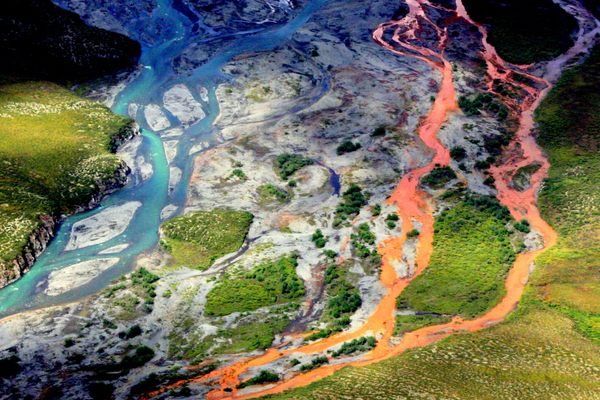Why a River in France Turned Very, Very Red
It’s so scientists can study karst.
Last year, rivers across France were dyed green to raise awareness about pollution in the country—an environmentalist stunt. Now we have another unnaturally colored river to add to the collective French memory, but this time it was for actual science.
Finalement le Gardon voit la vie en rose #montremoitonprofilkarstique @Gard @Costieres2Nimes pic.twitter.com/rvRLBrEOgQ
— TVSud (@TVSud) June 27, 2017
The Gardon, which runs for 83 miles across southern France, was recently turned red, courtesy of 33 pounds of nontoxic powdered dye, according to The Local, the work of scientists studying the local karstic landscape.
Karst is formed when flowing water breaks down the bedrock (often limestone) underlying an area, creating cracks, caves, sinkholes, ridges, and other formations, as well as an underground drainage system for local waterways and runoff. The red dye will be used to track the (perhaps surprising) places where the Gardon’s water ends up.
The experiment began Monday, June 26, near Dions, about 50 miles northwest of Marseille, and is set to last for up to 72 hours, which means there may be time to have a look if you find yourself nearby. But if you miss it, The Local said, next month a similar experiment will turn the river green. Once again, there’s nothing to be alarmed about.

















Follow us on Twitter to get the latest on the world's hidden wonders.
Like us on Facebook to get the latest on the world's hidden wonders.
Follow us on Twitter Like us on Facebook